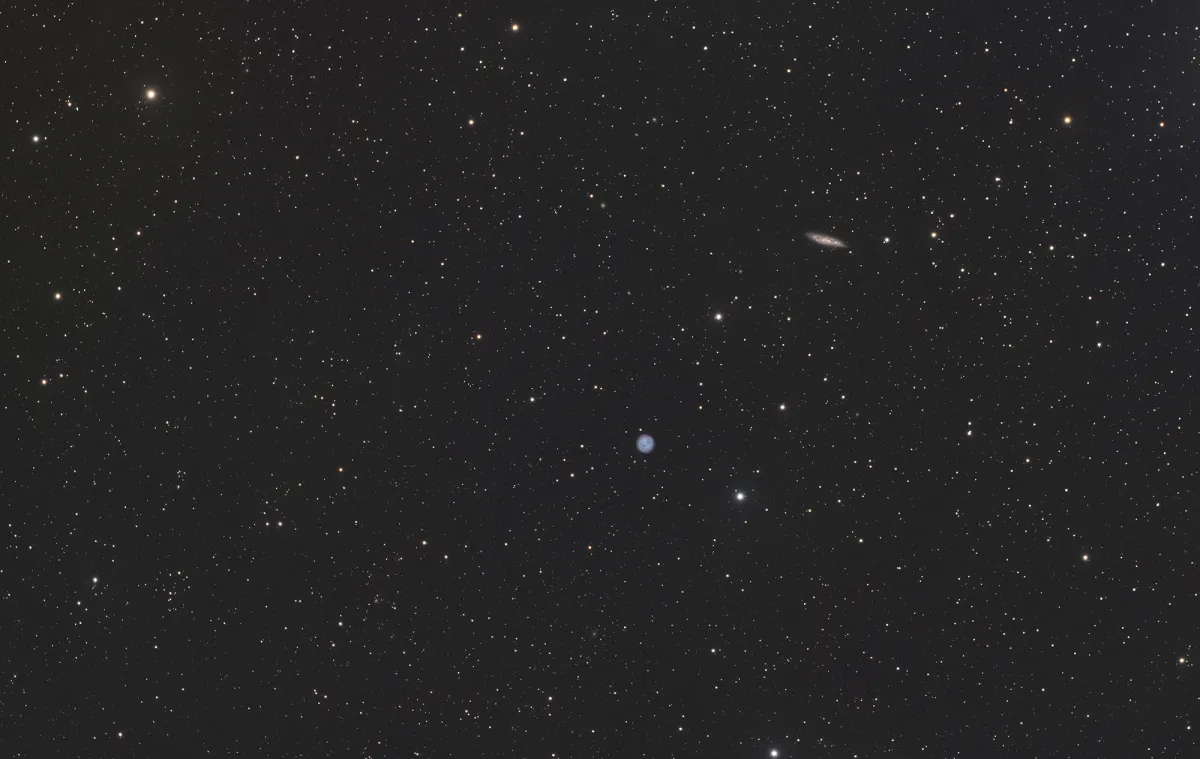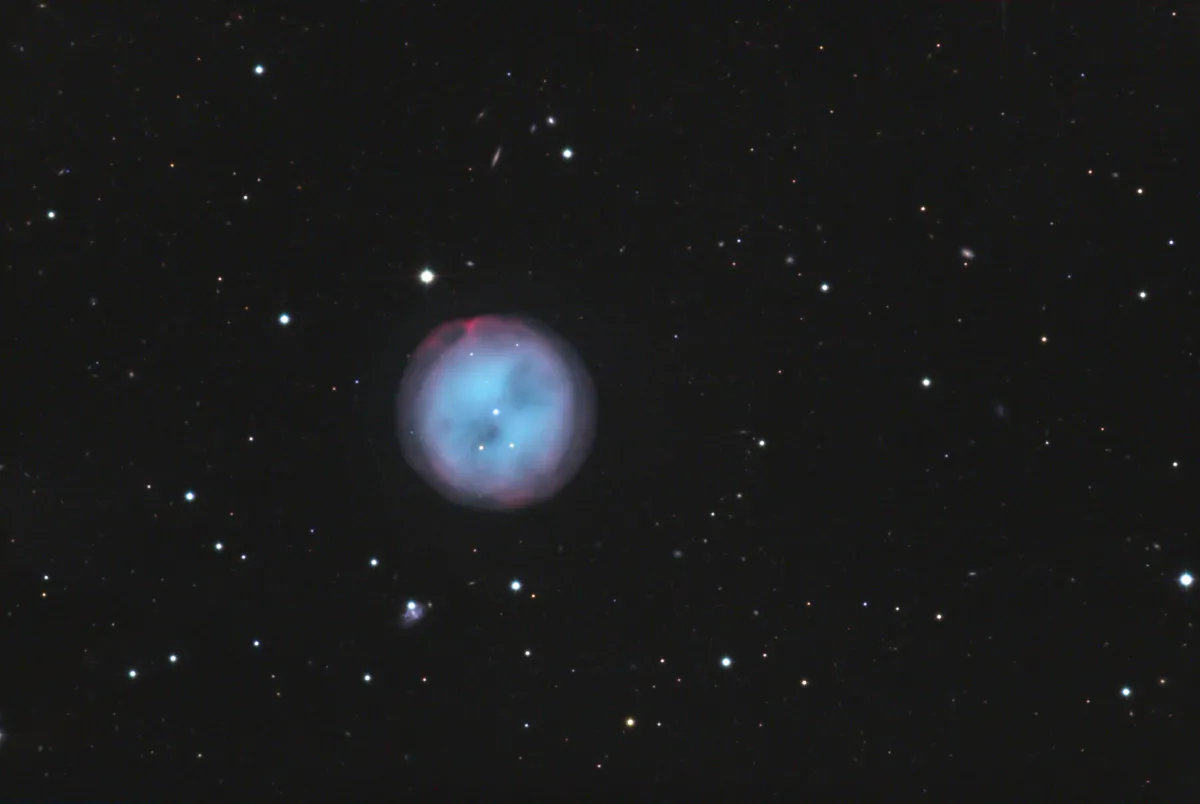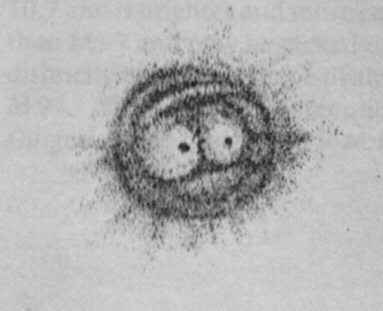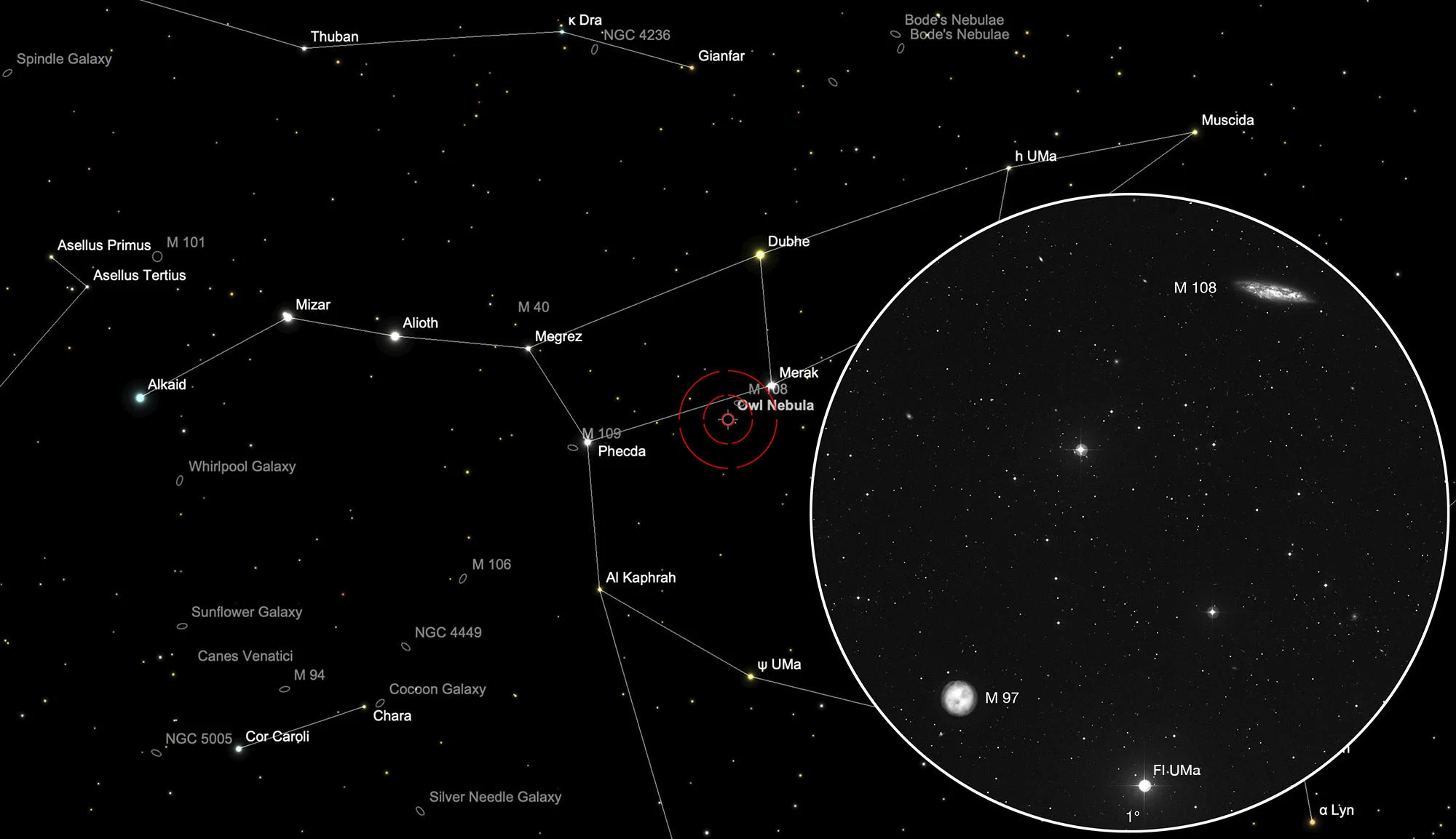Owl Nebula (M 97) & Galaxy M 108



Owl Nebula M 97

This planetary nebula was discovered on 16 February 1787 by the French astronomer Pierre Méchain. He was a younger colleague and close friend of Charles Messier. [196] The name «Owl Nebula» goes back to the Irish astronomer William Parsons, the 3rd Earl of Rosse (mostly just called «Lord Rosse»), who observed the nebula in 1848 and made the cute drawing shown in Fig. 4. According to him, both stars had been visible in the owl's eyes until March 1850, but then one faded and was no longer seen. [4]
M 97 is one of the more complex planetary nebulae. The appearance is interpreted by an obliquely viewed torus, whose material-poor eyes correspond to the eyes of the owl. This shell is surrounded by a weaker nebula with less ionization. The mass of the nebula is estimated to be about 0.15 solar masses. The 16 mag bright central star probably has 0.7 solar masses. The age of the planetary nebula is estimated to be around 6000 years. [17]
The distances given are very imprecise and range from 1300 to 12'000 light years. A latest measurement by Gaia DR2 in 2018 indicates a distance of 879 parsecs (2867 light years). [145]
| Designations | PN G148.4+57.0: NGC 3587, PK 148+57.1, ARO 25, M 97, VV 59, VV'107 |
| Right Ascension (J2000.0) | 11h 14m 46s |
| Declination (J2000.0) | +55° 00' 59" |
| Dimensions | 170." (optical), 170." (radio) |
| Distance | 0.5 kpc |
| Radial Velocity | +6.0 ± 3.1 km/s |
| Expansion Velocity | 29.0 (O-III) 40. (N-II) km/s |
| C-Star Designations | AG82 135 |
| C-Star Magnitude | U: 14.36, B: 15.66, V: 16.01 |
| Discoverer | LORD ROSSE 1850 |
Next to the Owl Nebula, just 19 arc minutes away, lies the star FI Ursae Majoris. It is a variable star of the δ Scuti type. Its brightness is 6.64 mag in the V-band and it pulsates around 0.007 mag with a period of 0.0400 days (57.4 minutes). [228]
Galaxy M 108

This galaxy was discovered by Pierre Méchain on 19 February 1781, and it was rediscovered by Charles Messier on March 24 of the same year. Both indicated the position relative to the planetary nebula M 97. Messier marked it as 98 in a preliminary manuscript of his catalog, but failed to measure the exact location before publishing his catalog. He added a handwritten note to his personal copy, which is why Owen Gingerich did not identify the galaxy as NGC 3556 until 1953 and added it to the Messier catalog as number 108. [196]
M 108 is a spiral galaxy of the Sc type, which we can see almost from the side. It shows no or only a very slight bulge and no noticeable centre, but mainly dust bands. The distance is estimated to be around 40 to 50 million light years. M 108 belongs to a loose group to which M 109 and probably also M 106 belong. [233]
| Designation | NGC 3556 |
| Type | Gx (Sc) |
| Right Ascension (J2000.0) | 11h 11m 29.4s |
| Declination (J2000.0) | +55° 40' 22" |
| Diameter | 8.6 × 2.4 arcmin |
| Photographic (blue) magnitude | 10.7 mag |
| Visual magnitude | 10.0 mag |
| Surface brightness | 13.1 mag·arcmin-2 |
| Position Angle | 80° |
| Redshift (z) | 0.002332 |
| Distance derived from z | 9.85 Mpc |
| Metric Distance | 14.320 Mpc |
| Dreyer Description | cB, vL, vmE 79°, pbM, r |
| Identification, Remarks | WH V 46; h 831; GC 2318; M 108; UGC 6225; MCG 9-18-98; IRAS 11085+5556; CGCG 267-48; CGCG 268-1; KARA 469 |
Finder Chart
The odd couple is very easy to find. It is located slightly below the second third between the two drawbar stars Phecda (γ Ursae Majoris) and Merak (β Ursae Majoris) of the Big Dipper. It is circumpolar, but the best time to watch it is November to August. Then the constellation is highest in the sky at night. In a large field eyepiece with low magnification and at least 1 ° field of view, both should be visible at the same time.
